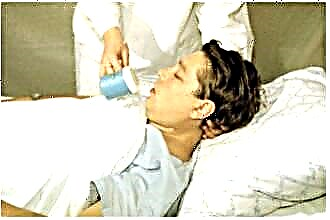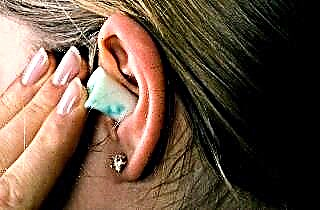Causes
 The causal relationship of coronary insufficiency is determined by cardiologists:
The causal relationship of coronary insufficiency is determined by cardiologists:
- Primary violations. They arise directly in the vessels (inflammation, trauma, plaque).
- Secondary violations. They develop with a sharp increase in metabolism in the myocardium. This becomes a consequence of damage to the coronary arteries. Such violations occur in other parts of the body.
Heart failure of the coronary vessels can occur both at the genetic level and when exposed to external factors. Common causes of development include:
- Anemia.
- Stress.
- Gas poisoning.
- Atherosclerosis (it promotes the formation of plaque on the vascular walls).
- Tumors that have arisen near the coronary vessels or on nearby organs.
- Vascular inflammation.
- Bad habits (smoking, alcoholism or drug addiction). They contribute to spasms of the vascular walls.
- Coronary sclerosis. Cholesterol plaques leave the walls of blood vessels, which, getting into the blood, interfere with the normal duct.
- Vein thrombosis. Blood clots can partially or completely block the duct to the heart.
- Congenital heart defect.
- Diabetes mellitus, which contributes to the formation of blood clots.
- Obesity.
- Anaphylactic shock.
Heart disease can be triggered by a genetic predisposition. Unfortunately, congenital or acquired diseases of the genetic type cannot be reversed.
According to statistics, a wrong lifestyle is more likely than others to cause the development of heart failure. The fact is that bad habits or poor nutrition provoke a number of serious diseases, which, in turn, have a bad effect on the state of blood vessels.
Obesity, through frequent snacks, the consumption of large amounts of fats and carbohydrates, excessive sweets, leads to diabetes. The level of harmful cholesterol rises, the viscosity of the blood increases, the formation of blood clots and cholesterol plaques is provoked.
Alcohol has the properties of deforming the vascular structure. Sharp changes from constriction to expansion irreversibly affect the vessels, and smoking is what kills them every day.
Genetic predisposition entails both congenital vascular pathologies and acquired ones. Diabetes mellitus is one of the diseases that can occur in adulthood. Everyone is at risk, but the percentage of damage to the body increases if an endocrine problem has been diagnosed in parents or the older generation. Congenital vascular pathologies occur during the development of the fetus while still in the womb, and cannot be influenced by external influences.
Other provocateurs of coronary insufficiency include stress, poisoning due to an unfavorable area of residence (near factories, factories, working with toxic waste, and so on). The last factor is the most insidious, since it shows its effect only after a long period of time, when the body has managed to accumulate toxic substances in itself. They entail not only malfunctions of the cardiovascular system, but also pathological conditions of other organs.
Classification
Coronary insufficiency can be expressed in two ways. Cardiologists distinguish:
- Sharp shape. The condition is characterized by a sharp change in the coronary vessels or the rhythm of blood flow. It occurs during severe stressful situations (fear, pain, temperature change), other rapidly developing diseases. Symptoms are sharp and pronounced. The acute form is often accompanied by myocardial stroke and this increases the risk of death.
- Chronic form. It has the peculiarity of developing for a long time. Gradual deformation of blood vessels can be provoked by both external factors and congenital pathologies (alcoholism, anemia, heart defects). The process is accompanied by a number of symptoms that can manifest itself as the state of health deteriorates. The body signals in the chronic form of the disease are quite long.
Chronic coronary insufficiency leads to gradual vascular damage. Experts identify 3 main degrees of severity of pathology.
- Lightweight. With the development of the first degree of insufficiency, the patient may feel mild chest pain. It appears with strong emotional or physical stress.
- Average. The second degree causes palpable pain in the region of the heart. Physical activity is accompanied by shortness of breath and increased heart rate. Long-term pain, in some cases, causes indigestion, nausea and vomiting.
- Heavy. The most dangerous form of development. The patient feels acute and prolonged chest pain even at rest. Stamina decreases, even normal movement around the house causes difficulty. The patient needs rest and sleep to recuperate.
The chronic form of coronary insufficiency does not lead to death or myocardial stroke. It often provokes coronary heart disease.
Symptoms
Coronary heart failure has a number of characteristic symptoms. The detection of several is a signal of the need for an examination.
Pronounced signs:
- Shortness of breath with little exercise.
- Nausea and vomiting.
- Pale skin of the face.
- Feeling of stiffness after exercise.
- Labored breathing.
- Sharp pain in the chest area.
Timely diagnosis contributes to effective treatment. With a mild form of pathologies of the main vessels of the heart, the process can be reversed, but this is almost impossible with a long course of the disease.
Treatment
Treatment for coronary heart failure should be initiated at the first sign. A severe form of the disease can lead to a complete lack of the possibility of recovery, the need for surgical intervention. Cardiologists have developed a comprehensive treatment. It consists of several stages.
- Lifestyle correction. It includes giving up bad habits, choosing the right diet, gradually increasing physical activity, normalizing the daily routine (sleep, activity and rest - at the same time). If coronary insufficiency has arisen against the background of other diseases (anemia, diabetes mellitus, obesity), then it is necessary to undergo a course of treatment or maintenance of the body, respectively.
- Medicines. The specialist prescribes them depending on the degree and cause of damage to the heart vessels.
- Wellness procedures. Apparatus for correct breathing, visiting a sanatorium. These activities consolidate the results of recovery and help maintain vascular health.
First aid for exacerbation
In case of an acute attack, you must immediately call an ambulance. A patient's heart can stop at any minute, and it is impossible to resume its work without specialized equipment.
When the main task is completed, it is necessary to pay attention to stabilizing the patient's condition. While waiting for the emergency team, you must:
- Provide peace. The patient should be immediately put on a bed or sofa. If during an attack there is severe shortness of breath or cough, then the patient should be seated in a chair.
- Eliminate possible chest tightness. In case of heart attacks, even small loads, including clothing, affect the chest area. The patient needs to completely bare the upper part of the hoist, remove not only things, but also jewelry (beads, chains, pendants). If possible, measure blood pressure
 Provide fresh air. In acute coronary insufficiency, a squeezing feeling arises in the chest area, it makes breathing difficult. By opening all the windows, you can increase the flow and circulation of oxygen in the room. This will ease the patient's breathing and strain on the heart.
Provide fresh air. In acute coronary insufficiency, a squeezing feeling arises in the chest area, it makes breathing difficult. By opening all the windows, you can increase the flow and circulation of oxygen in the room. This will ease the patient's breathing and strain on the heart.- Give medication. The most common and effective remedy is Validol. He is able to relieve pain before the arrival of the ambulance. Validol is placed under the tongue of the patient, and its effect occurs after a few minutes.
"Nitroglycerin" is the second option for a heart attack. It also needs to be placed under the tongue. It acts faster, within the first minute. If the pain has not decreased or the changes were minor, then after 10 minutes the tablet must be given again. This drug is contraindicated in patients with low blood pressure.
There are many causes of coronary insufficiency. It can be provoked by both a serious internal damage to the body and external factors. To maintain heart health, you need to take care of yourself, take preventive measures and give up bad habits.

 Provide fresh air. In acute coronary insufficiency, a squeezing feeling arises in the chest area, it makes breathing difficult. By opening all the windows, you can increase the flow and circulation of oxygen in the room. This will ease the patient's breathing and strain on the heart.
Provide fresh air. In acute coronary insufficiency, a squeezing feeling arises in the chest area, it makes breathing difficult. By opening all the windows, you can increase the flow and circulation of oxygen in the room. This will ease the patient's breathing and strain on the heart.

